There was a lot of cool stuff shown at Interbike last week – but perhaps one of the coolest and least expected technology items demonstrated was a partnership between Fox (the bike company, not the TV corporation) and Garmin that allows you to calibrate your Fox Racing Shock system using the Edge 800 via ANT+. They also demonstrated it using a Bluetooth enabled Android phone using a custom application. This component is called Smart Pump, and is part of Fox’s Intelligent Ride Dynamics system.
So why introduce a system such as this to a mountain bike? Well, as the Fox folks explained – they see an incredible amount of bikes with shocks that leave the bike shop (configured correctly or otherwise) and then are never re-calibrated again. This has in turn lead to customers that are unhappy with their bike setup and ride, not realizing a simple recalibration could fix things. Many customers simply don’t know where to begin – especially if new to mountain biking.
Fox’s Eric Mellegers explained by saying, “The main motivation of this product is to have an interface to make it easy for the end user or the dealer to setup their suspension correctly without having to understand the concept of setting sag or understanding travel or strokes on rear shocks. Ultimately this will improve the end users experience with minimal knowledge with an easy interface and an electronic guide to a perfect balanced setup.”
I should point out that the system doesn’t weigh any more than a traditional pump – and they even commented they don’t see this as an expensive item. For them, having happily calibrated customers is more important than the trivial cost of a few electronic chips (read: It costs far less than unhappy folks returning bikes).
First, I’ll get into how the system works – and then I’ve got some non-fancy video of calibration using both methods.
Installed on the bike is the Smart Pump that has both an ANT+ chip in it, as well as a Bluetooth chip. This pump is used to control the calibration of the shocks (front and back) as well as give pressure readings within the system.
You can see it connected to the front shock, below:
You’ll note above that there’s actually a QR tag code stuck to the side of the shocks – both front and back – that you can scan via cell phone camera. In addition to the code, there’s also an ID that you can manually enter in (for the Garmin Edge 800). The reason for the QR code is that each individual shock serial number can be stored and then quickly referenced. Think of it like a serial number. It also allows the system to know exactly what type of shocks you have.
In the case of the Edge 800, you’ll notice a new menu option within the bike profile page for a given bike (as usual on the Edge 800 you can setup multiple bikes):
Once the ‘ANT+ Shocks’ menu is selected, you’re then able to either go through a setup wizard – or review shock settings.
If you choose the setup wizard, it’ll walk you through step by step in shock configuration (you can watch the whole process in the video below).
The system then reads the pressure in the shocks and allows you to adjust the shocks (simply by turning the blue knob at the top) to get to the correct sag or rebound. Because the data is transmitted in real-time, this means during some steps you’ll actually see the pressure reading on the unit change instantly as you adjust pressure.
Meanwhile other steps such as rebound adjustment will instruct you to bounce the bike – where the system measures the rebound each time.
You can see the information is display on both the Garmin Edge 800 (above) as well as the Android phone (below).
Now that I’ve given you a brief overview, I’m going to let the product designers give you a walk through. The videos are a touch bit long – and shot on the busy show floor – but for those interested in the subject, it gives you a pretty clear idea of how it works. I’ve split them into two pieces – one showing calibration with the Edge and then with the Android phone.
The first is the Garmin Edge 800 paired via ANT+ to the Fox Smart Pump system, with Shannon Boucousis from ANT+ and Matt Hrabko from Fox:

Calibration of the Fox shock system via Garmin Edge 800
Next we’ve got calibration with with the Android phone via Bluetooth, this time with Eric Mellegers of Fox. The phone’s display is mirrored onto the TV screen you see via cable, simply to make it easier to see (which I admit, can be kinda hard to see with the continually changing focus):

Calibration of the Fox shock system via Android phone
So what do you think? Is this a system that you’d find useful? From the folks I talked to on the show floor – primarily bike shop owners and employees – they said this would be incredibly helpful from a customer satisfaction standpoint, especially folks new to mountain biking.
But since this setup is purely concept, there’s no date on if or when it might be released – they’re looking for feedback from folks like you if you’d find this of value. Like most things I post around these parts, the right people are definitely watching this page – so if it’s of value – drop a note in the comments.
—
For all my Interbike coverage here on the blog you can use this tag to see all the Interbike 2011 posts. Thanks for reading!
FOUND THIS POST USEFUL? SUPPORT THE SITE!
Hopefully, you found this post useful. The website is really a labor of love, so please consider becoming a DC RAINMAKER Supporter. This gets you an ad-free experience, and access to our (mostly) bi-monthly behind-the-scenes video series of “Shed Talkin’”.
Support DCRainMaker - Shop on Amazon
Otherwise, perhaps consider using the below link if shopping on Amazon. As an Amazon Associate, I earn from qualifying purchases. It doesn’t cost you anything extra, but your purchases help support this website a lot. It could simply be buying toilet paper, or this pizza oven we use and love.



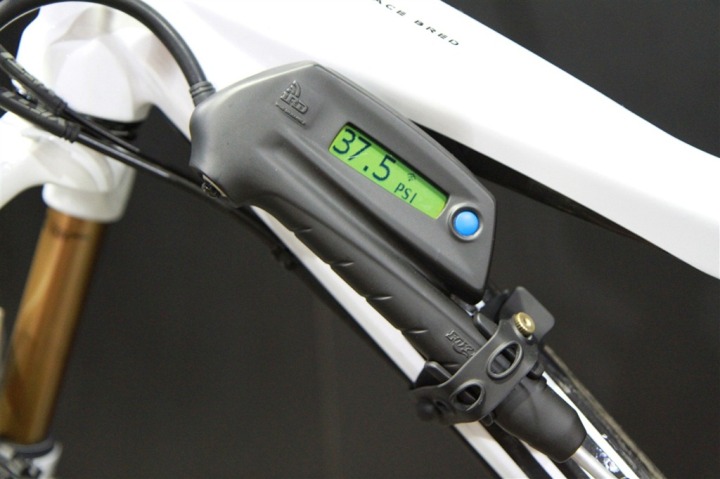
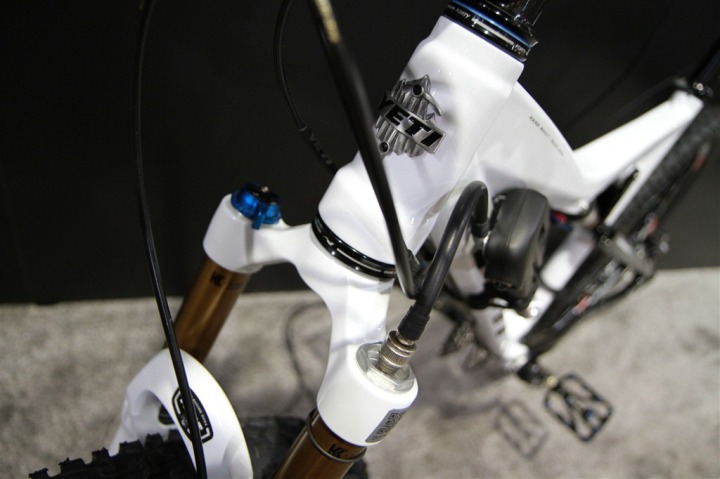

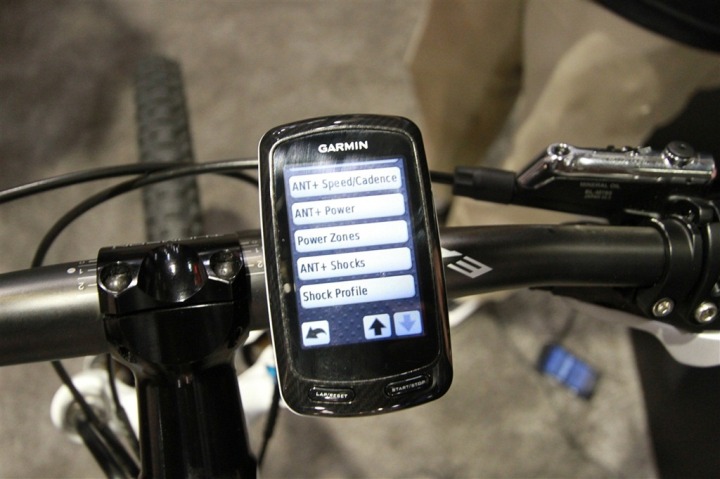
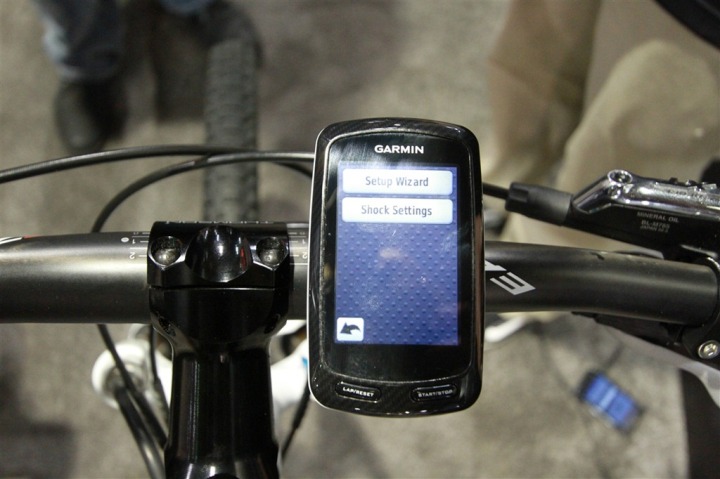


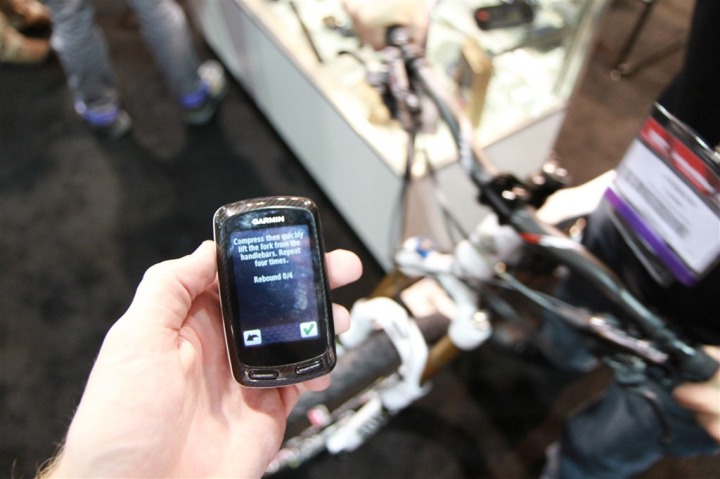
















I love all things tech but this seems like tech for tech sake.
If there were 15 variables to adjust then I could see the value – but with just two it seems overkill. You can get the pressure almost 100% accurate using a normal shock pump. Sag is something you need to test out in the field.
What would be cool is if to ANT+ enable the shock and send back compression values to a headunit.
A shock pump and 5 minutes of reading the user manual gets the job done, and won’t cost $$$$$ like this tool likely will – plus the required Garmin computer or fancy smart phone.
It is a tool that not geared to the 10 year veterans, but for those getting into full suspension bikes for the first time that do not have a pump this is a great tool.
because the tool walks the user, not the shop thru the tool. I see it being used more that people reading the manual. customer just do not read them, and if you have most of the time they are not written for the novice.
I would also say that 50% of the bikes that we sell, the customer dose not by a shock pump.
Most do not even know that the bike could ride better if they tune the suspension after we set it in the shop.
I hope we see this sooner than later. it nothing more than a pump with electronics. I do not see why they could not right a program to run on windows with an ant+ stick to reduce the customer cost.
PLEASE! PLEASE! PLEASE! Bring this to market. PLEASE!
About sag: Having a motorcycle background, sag is adjusted once with full gear. Not in every new field/track. What change is the rebound according to it’s user riding style, the track, etc.
I think/guess that the same applies to MTB.
As for the gadget.
It’s cool for new users !
I remember myself searching/reading/trying to adjust my forks/suspension time after time on my motorcycle.
As the user get’s more experienced probably she/he will not needed anymore.
But for a start, having a point to begin with, it should be great !
I think this is a great use of available technology, I know with 4 MTB bikes in the family and often we’ve got friends coming out for a ride on our bikes this would save tons of pre-ride time, not to mention arguments on what gets adjusted first! I’m in.
The usefulness, or the desire to have this product will depend on a couple of factors: 1) how much the bike unit costs, and 2) whether you already own a Garmin 800 or an Android phone. No one is going to spend $400+ just to be able to get their bike to tell them how much more/less pressure it needs. The operations manual or a bike shop can do that for a lot less.
Ray, can this also help set compression on shocks with such a setting?
And how does it actually sense the motion? In car racing circles, we put linear position sensors parallel to the shock, but I see no such device here. Is it acting purely by sensing pressure changes, or does the unit itself have an accelerometer in the “pump” that is sensing movement?
If it can do rebound, sag, and compression, I could see this being a very useful tool. I learned fairly early how to get my fork fairly dialed in, but it really seems like rear shock setup is much more of a mystery. I think it’s largely due to the enhanced feel we can get in our hands over our butts, so tuning the “butt dyno” just takes a lot longer.
If the “pump” is indeed only attached for sag setting purposes and otherwise is just sensing motion, Fox should consider ANT+ linear position sensors to log data while riding so further enhancements can be made to suspension setup on a per-course basis. Ride a course as you would (or close) in a race, download data, let software tell you what the optimum setup will be. That kind of thing is what’s done on race cars, though one obvious difference is they have more test iterations available and it does take a few iterations to truly dial a suspension in for a given course. But even one pre-ride dataset can help, and if you can get more then you can get even better. Build a database of settings for a set of courses and you’ll start to understand what certain suspension designs like better in terms of settings for various element types.